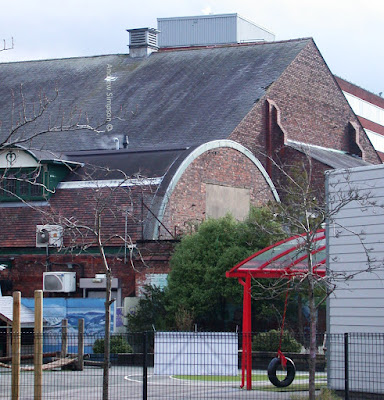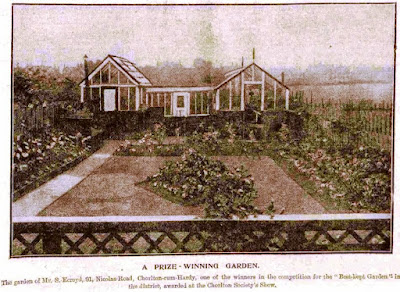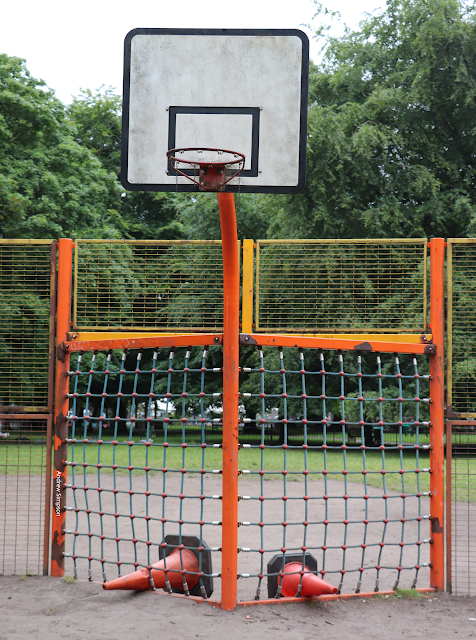Knowing of my recent fascination with Manchester’s public clocks, my friend, Andrea, kindly sent me this photograph of one on Oxford Street, taken from outside the O2 Ritz, on Whitworth Street West.
 |
| The clock tower by night, June 2022 |
It is a feature of a Grade 11 listed building, which has been an aspect of the Manchester skyline for close to 130 years, that is now a hotel but from its construction in 1893-5 for almost a century it served as the headquarters of the Refuge Assurance Company (1)
This iconic building was designed by the celebrated Victorian architect, Alfred Waterhouse, with additions, after his death on the 22nd August, 1905, by his son Paul Waterhouse in 1906 and, in 1920 by Stanley Birkett.
The building, whose three phases complement each other was finally finished in 1930. The impressive 66 m (217 ft.) clock tower formed part of the second phase completed in 1912; its clock faces feature a stylised depiction of the Manchester Bee.
Other Alfred Waterhouse buildings in Manchester include The Town Hall, Owens College, and Manchester Assize Court which was a victim of German bombing raids during the second world war.
 |
| The Clocktower in 1977 |
He was also responsible for The Natural History Museum in London and The Liverpool Royal Infirmary, in his native city.
The Stockport County Express on the 15th June, 1893 published a very poignant description of the plans for the new building; “The main entrance ----------- is surmounted by a tower and spire which will be seen from a considerable distance”. Indeed, this was the case as could be testified by generations of returning exiled Mancunians who would have espied the welcome sight as they approached Oxford Road station on their way to London Road/Piccadilly.
On a personal note, as someone who made this journey numerous times as a young man, I can still recall the thrill when the REFUGE sign was spotted especially on a dark night in winter when it was illuminated with red lights. A symbolic “welcome home” message.
The Refuge Assurance Company moved their headquarters to Wilmslow, Cheshire on Friday the 6th November, 1987. The building was left empty for nearly 9 years while an alternative use for it was sought.
 |
| The tower lit up for Manchester's Civic Week, 1926 |
Eventually, in 1996, after a £7 million renovation, it opened as The Palace Hotel. After several transfers of ownership and accompanying refurbishments and name-changes it is now called the Kimpton Clocktower Hotel.
 |
| The Refuge Buildings original (1895) main entrance in 1957 |
The “Refuge” name has continued in the name of the first-class restaurant situated on the ground floor which I was lucky enough to visit, on one occasion, for an awards ceremony as a guest of my Housing Association.
The internal size of the building can be gauged by over 900 clerks being once employed within its walls. Originally these would only be males and when the company started to take on female staff any fraternisation between the sexes was actively discouraged.
They had separate starting and finishing times staggered lunch breaks and even separate staircases. Any staff outings which were organised had to be for different places for men and women. Later these rules were relaxed and the basement ballroom was used by staff at lunchtime.
 |
| The Waterloo Hotel, Burton Road, Withington in 1962 |
There were also thriving cultural and sporting societies e. g. an Amateur Opera and Dramatic Society who performed on the stage in the basement ballroom and a bowling club whose headquarters were at the Waterloo Hotel, 23, Burton Road, Withington, Manchester.
Pictures; The clock tower by night, June 2022 courtesy of Andrea Martinez. Refuge Clock m 62254, Refuge original, 1895, main entrance m 56301 - L. Kaye (1957), the tower lit up for Manchester's Civic Week, 1926 m 07624, and The Waterloo Hotel m 42873 J.F. Harris (1962) all courtesy of Manchester Libraries, Information and Archives, Manchester City Council, http://manchester.gov.uk/index.php?session=pass
Notes: -
1) The Refuge Assurance Company was founded in 1858 at 58, Astley Street, Dukinfield, Cheshire and went by the elongated name of “Refuge Friend in Deed Life Assurance and Sick Fund Friendly Society” but this was, unsurprisingly, soon shortened to its much more succinct title.
Acknowledgements: - As usual I have delved into multiple sources the most useful and generally more reliable is the newspaper archive on Find My Past but I found other additional information on the Tameside Local History Forum and the Dictionary of Greater Manchester Architects 1800-1940 database created by the Manchester Branch of The Victorian Society







.jpg)








































